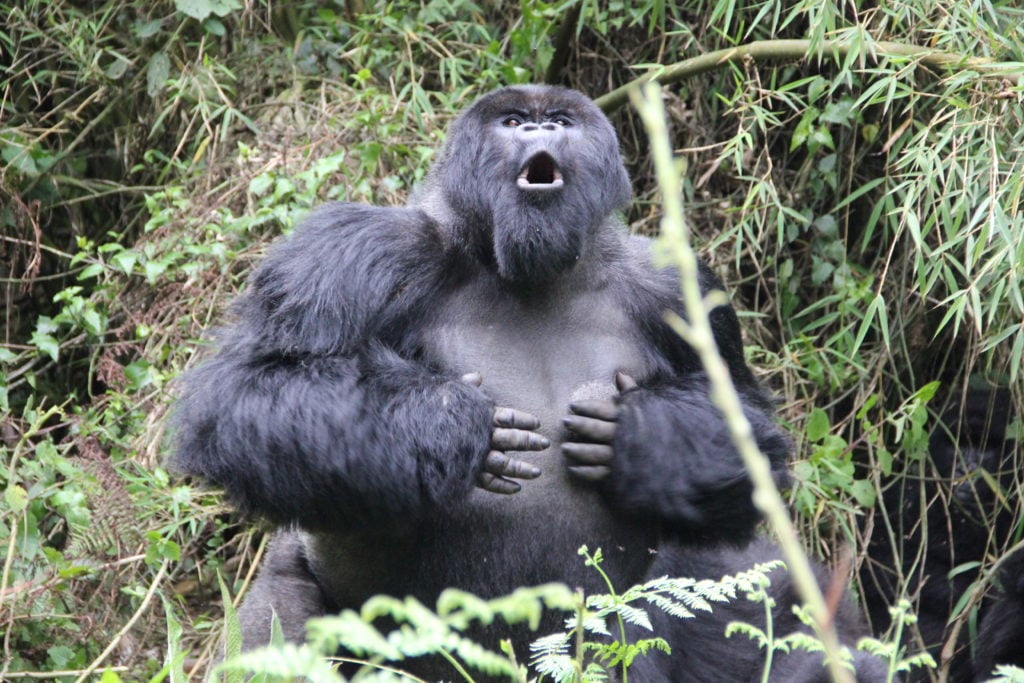1. Gorillas communicate in a number of ways, including through vocalizations!
In one of Dian Fossey’s papers, she described 16 different vocalization types which she classified into 8 vocalization categories. The vocalizations in these categories serve different purposes for communication, ranging from infants communicating distress to their mothers, to silverbacks showing off how strong they are.
-Aggressive Calls: Roar, Growl, Pant SeriesMild Alarm Calls: Question Bark, Hiccup bark
-Fear and Alarm Calls: Silence, Screams, Wraagh (alarm bark)
-Distress Calls: Cries, Whines
-Group Coordination Vocalizations (With minimal disturbance): Pig Grunts, Hoot Bark, Belch vocalization
-Intergroup Communication: Hoot Series
-Miscellaneous Vocalizations: Chuckles, Copulatory Pants, Whinnies

2. Vocalizations may be paired with a behavior.
For example, the hoot series is seen both with and without chest-beating. It is made up of a sequence of individual “hoo” sounds that start out quiet but build into a series of louder and longer vocalizations. This type of vocalization is heard during intergroup contacts or between a group silverback and a lone silverback. Hoot series may even be exchanged between males a ½ mile apart!
3. The most common vocalization made by gorillas are belches.
Belches are described by Fossey as, “a deep prolonged rumble rather like a soft belching sound, especially when heard from any distance. It [is] most commonly uttered as a long, di-syllabic, ‘throat-clearing’ type of sound (ummm-ummm) with the second note dropping down from the first”. Belch vocalizations are used to convey a sense of contentment between individuals. It is most often initiated by a silverback, followed by the rest of the group.

4. Just like humans, gorillas love to laugh when playing.
Gorillas produce chuckles during sessions of play when multiple individuals are involved in games such as wrestling, tickling, and chasing. Chuckles are often accompanied by the gorilla play face where a gorilla’s mouth is hanging open with no teeth showing. Chuckles are not usually heard during bouts of solitary play, however you may still see a play face!
5. Some vocalizations are sex or age specific.
Roaring, a type of aggressive call, is typically only performed by silverbacks. Roars are heard when a male feels threatened or when a silverback is threatening another male.
As another example, cries are only heard in infants. According to Fossey’s notes, this distress call bears a “resemblance to the cries of human infants, especially when they occasionally built up into screams or shrieks much like a temper tantrum”. Infants will typically cry out when they get left behind, separated from their mother, when needing assistance, or are in an uncomfortable position.







